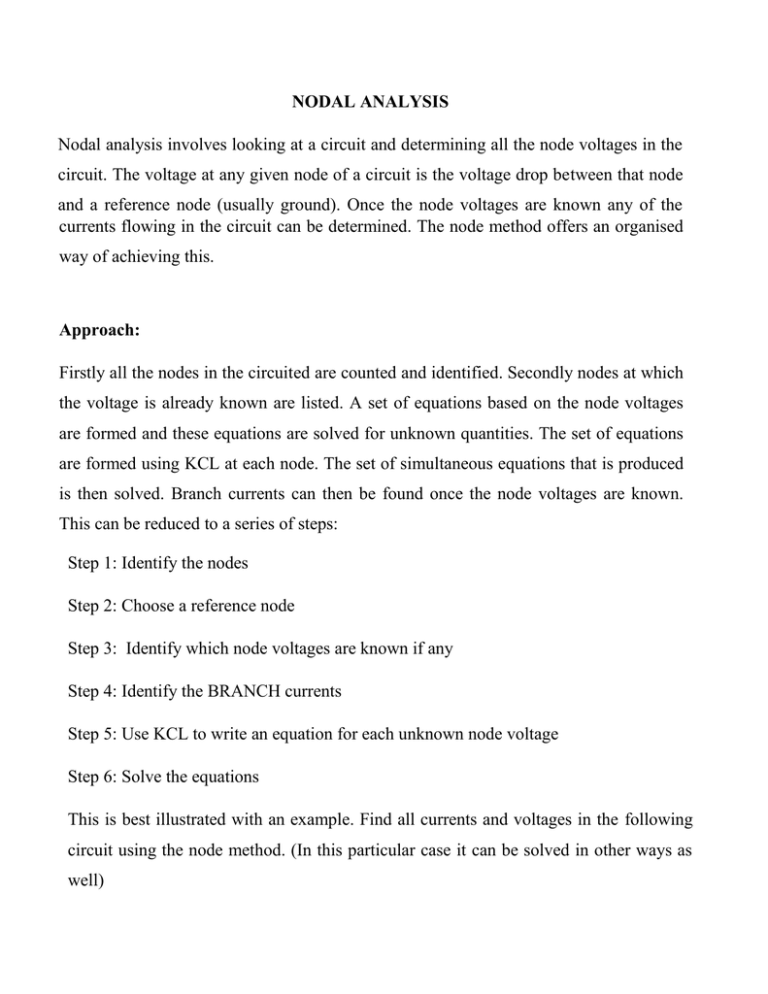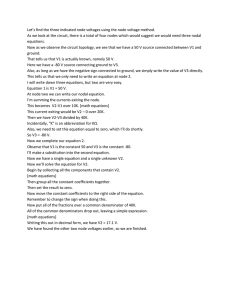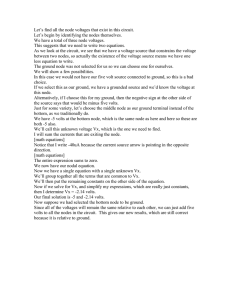NODAL ANALYSIS Nodal analysis involves looking at a circuit and
advertisement

NODAL ANALYSIS Nodal analysis involves looking at a circuit and determining all the node voltages in the circuit. The voltage at any given node of a circuit is the voltage drop between that node and a reference node (usually ground). Once the node voltages are known any of the currents flowing in the circuit can be determined. The node method offers an organised way of achieving this. Approach: Firstly all the nodes in the circuited are counted and identified. Secondly nodes at which the voltage is already known are listed. A set of equations based on the node voltages are formed and these equations are solved for unknown quantities. The set of equations are formed using KCL at each node. The set of simultaneous equations that is produced is then solved. Branch currents can then be found once the node voltages are known. This can be reduced to a series of steps: Step 1: Identify the nodes Step 2: Choose a reference node Step 3: Identify which node voltages are known if any Step 4: Identify the BRANCH currents Step 5: Use KCL to write an equation for each unknown node voltage Step 6: Solve the equations This is best illustrated with an example. Find all currents and voltages in the following circuit using the node method. (In this particular case it can be solved in other ways as well) R1 R2 + V R4 R3 - Step 1: There are four nodes in the circuit., A, B, C and D Step 2: Ground, node D is the reference node. Step 3: Node voltage B and C are unknown. Voltage at A is V and at D is 0 Step 4: The currents are as shown. There are 3 different currents R1 R2 B A C I1 R4 V R3 I2 I3 D Step 5: I need to create two equations so I apply KCL at node B and node C The statement of KCL for node B is as follows: V VB R1 VC VB VB R4 R2 0 The statement of KCL for node C is as follows: VC VB R2 VB R3 0 Step 6: We now have two equations to solve for the two unknowns V B and VC. Solving the above two equations we get: VC V VB V R3 R4 R1 R4 R1 R2 R1 R3 R2 R4 R3 R4 R1 R2 R4 ( R2 R3 ) R1 R3 R1 R4 R2 R4 R3 R4 Further Calculations The node voltages are know all known. From these we can get the branch currents by a simple application of Ohm's Law: I1 = (V - VB) / R 1 I2 = (VB - VC) / R 2 I3 = (VC) / R 3 I4 = (VB) / R 4 Source : http://nprcet.org/e%20content/first/ct.pdf V




